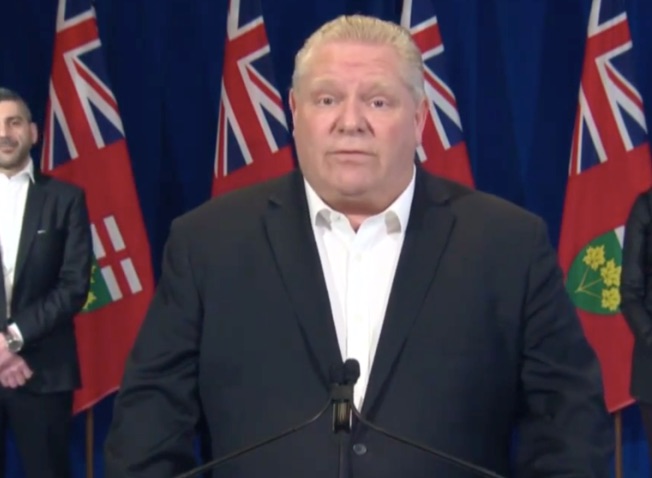The Ontario government is ordering everyone in the province to stay at home except for essential reasons, while also allowing non-essential businesses to keep operating.
For anyone struggling to reconcile this, Premier Doug Ford has a blunt message.
“There’s no confusion. It’s very simple,” Ford said Wednesday. “Stay. Home. Stay home. If you’re questioning, ‘Should I go out,’ you got the answer: stay home.”
And then, in case Ontario’s hundreds of thousands of francophones failed to comprehend, Ford glanced down at his notes and said: “Restez à la maison.”
Since the second wave of COVID-19 began building in Ontario in September, this is the clearest Ford has been in telling people what they must do to rein in the pandemic.
It makes you wonder: if he’d said this a month or more ago and imposed a stay-at-home order and new state of emergency then, how different would things be now?
The wording of the order was published Wednesday evening, more than five days after the news conference in which Ford promised that new restrictions were on the way.
During that news conference last Friday, Ford said the latest modelling for the pandemic was so grim “you’ll fall off your chair.”
Many health experts are questioning why Ford needed that modelling to see the tsunami of COVID-19 cases hitting Ontario, threatening to fill intensive care units beyond capacity.
The government can’t say it wasn’t warned — repeatedly — about what was coming unless tougher restrictions kicked in.
Modelling in late November from the province’s COVID-19 science advisory table projected the province would see an average of 2,000 cases per day sometime in December. Ontario crossed that threshold Dec. 17.
Modelling made public on Dec. 10 warned the province would surpass 300 COVID-19 patients in intensive care later in the month and approach 400 in early January. ICU occupancy passed the 300 mark just after Christmas and hit 400 on Jan. 9, according to the official daily reports by Critical Care Services Ontario.
































